When you decide to enter a quilt show for the first time, you probably think the biggest challenge is finishing your quilt on a deadline. (Ok, that is a big part of it!) But once you start to fill out the entry forms, you realize you need to collect a lot of information and write various statements before you ever hit send.
Imagine how much work is involved if you are filling out an entry form when your computer or the show’s system crashes or if you enter the same quilt in multiple shows.
That’s where a simple word processing form or spreadsheet can make your quilt-show-entering life a lot easier. I keep my information in a word processing document on my computer, but many people prefer Google Docs, so choose the method that works for you.
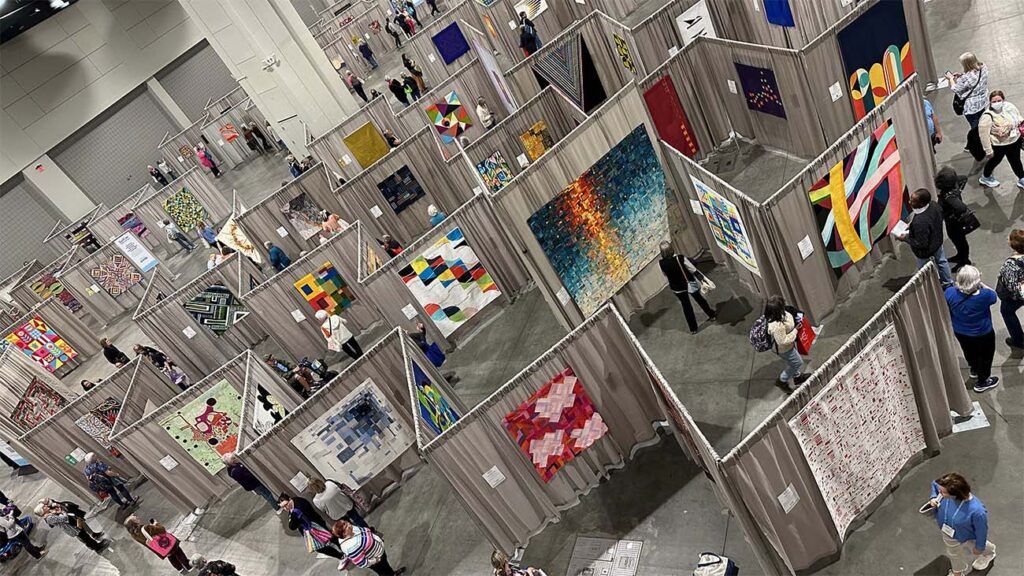
Before We Jump In
This post is primarily about keeping documentation organized for entering a quilt show. If you are looking for more general advice and information on entering quilt shows, check out these posts:
- 5 Tips for Entering a Juried Quilt Show
- Quilt Show Entry Tips from Quilting Jetgirl
- A Brief Overview of My Favorite U.S. Quilt Shows from Kelly Spell
- Tips for Entering Your Quilts Into Shows from Christa Watson
Information You Need to Enter a Quilt Show
Each show or exhibition you enter will have different requirements. Almost all will require dimensions, many will require a list of techniques, and some will require detailed information about materials. The easiest way to ensure you have everything you need at your fingertips is to create a single document with all the information you will need for various shows. If you collect this information once while the construction process is still fresh in your mind, you can enter future shows in minutes instead of hours.
As we go through today’s post, I’m sharing the information for Next Verse Different Than the First, one of the quilts I am currently entering in shows.
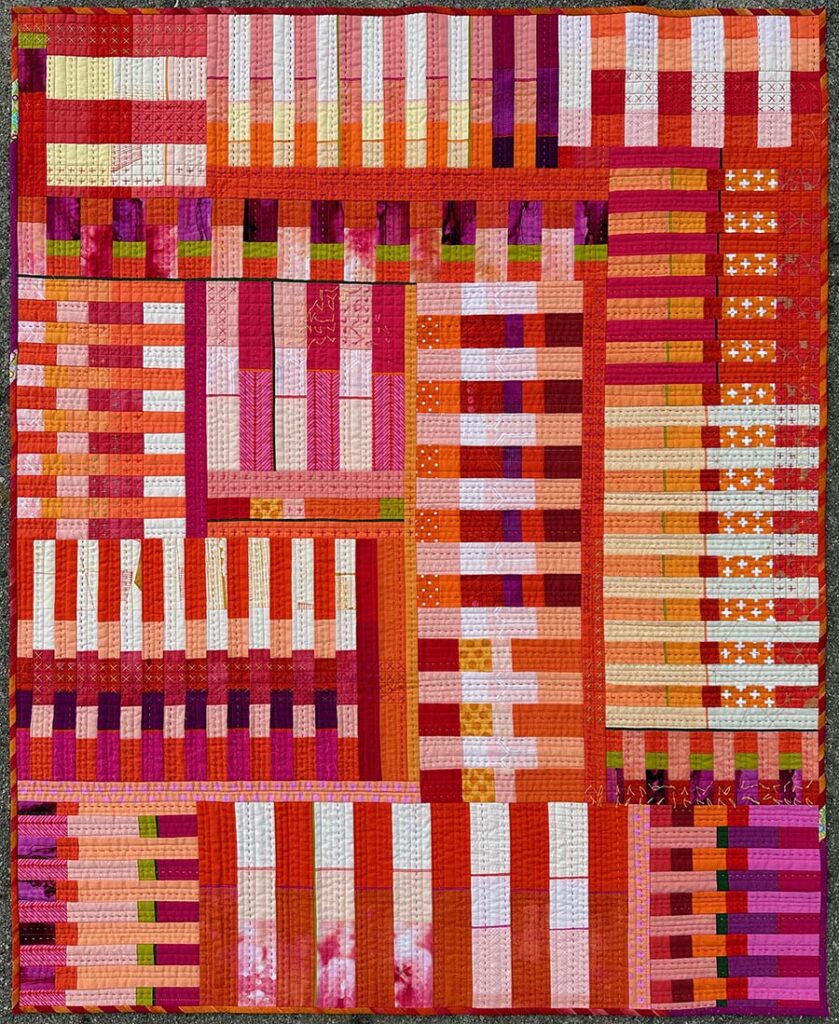
Dimensions
List width and length separately on your form, and always make the width the horizontal measurement of the quilt. I always list accurate measurements within my document, but most shows expect you to round the measurement to the closest whole number. I do that on individual forms in case a particular show expects you always to round down or always round up.
Next Verse Different Than the First
- Width: 36.5″
- Length: 45″
- Perimeter: 163″
A Note About Perimeter
Occasionally, a show will ask for a perimeter instead of length and width. I really hate this option. For simple shapes, it’s great, but I occasionally have a quilt with an irregularly shaped edge that has a different perimeter measurement due to curves around the edge of the quilt. I typically list the true perimeter, but if a quilt would alter its category because of a shaped edge, I would contact the show to confirm that is their intention.
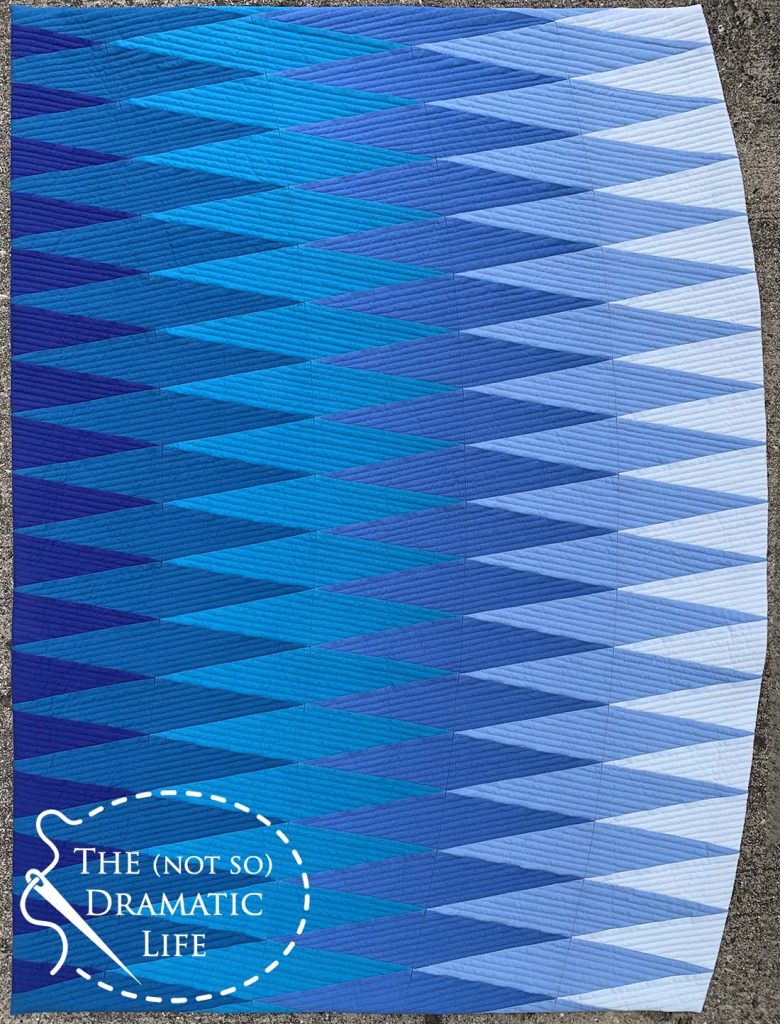
Materials
I always list the types of fabrics, batting, and thread I use in the quilt. Art exhibits are the most likely to want materials listings, but sometimes, this information helps jog my memory when it’s time to enter shows with special categories. For instance, I made Next Verse Different Than the First primarily with scrap fabrics, which made it a good choice for the special scrap category at QuiltCon 2024.
Next Verse Different Than the First
- Batting: Hobbs Tuscany 80/20 Cotton/Wool Blend
- Thread: 50 weight and 12 weight Aurifil
- Fabrics: Solid and print quilting cotton, hand-dyed fabrics, primarily scrap from Emergence
Construction Techniques
Quilting Category
Nearly every quilt show needs to know if you quilted your quilt with a domestic machine, longarm machine, or by hand. Sometimes, shows use the terms stationary and moveable for machines. Unless mounted to a moveable frame, most domestic machines are stationary. Any longarm on a frame, instead of set into a table, is a moveable machine.
When in doubt, ask yourself if you moved the fabric through the machine (stationary) or if you moved the machine over the fabric (moveable).
Specific Quilting Methods
Beyond the primary type of quilting, you will frequently need to include specific techniques. For instance, the American Quilter’s Society (AQS) shows have specific listings for computer-assisted, free-motion, matchstick, ruler work, stencil, trapunto, and walking foot.
Other Construction Techniques
Any technique you used to make your quilt top gets listed here, and you will want to include as many specifics as possible to make it easy to maintain consistency between show entries. For instance, AQS has six options for appliqué and another six for piecing, so it is wise to know which options you selected for each quilt.
Next Verse Different Than the First
- Quilting: Domestic machine walking foot quilting and hand quilting
- Techniques: machine piecing, improv piecing, interleaving, machine walking foot quilting, large stitch hand quilting
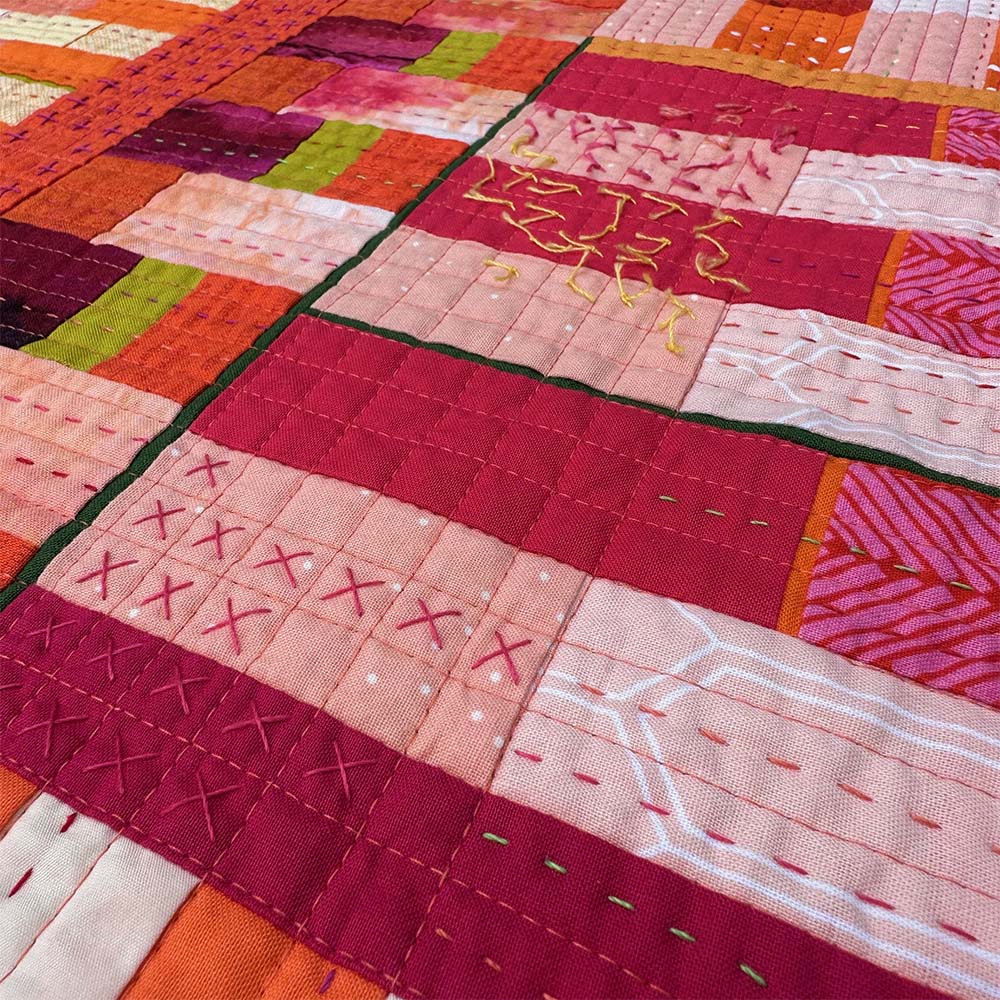
Date of Completion
Some shows need a year, while others expect a specific month or day. If I can’t remember the day, I get it as close as possible and remain consistent. I’m usually good at an accurate estimate within a few days, but now that I know I need to answer this question, I make sure to mark completion dates on my calendar.
Next Verse Different Than the First
Completed: October 24, 2023
Sale Price
Some shows allow you to list your quilt for sale, but most still allow you to list the quilt as Not For Sale if you don’t want to sell the piece. If I decide to list something for sale, I decide what amount of money I will be happy to receive for the quilt and adjust the overall price based on what percentage of the sale price goes to the show.
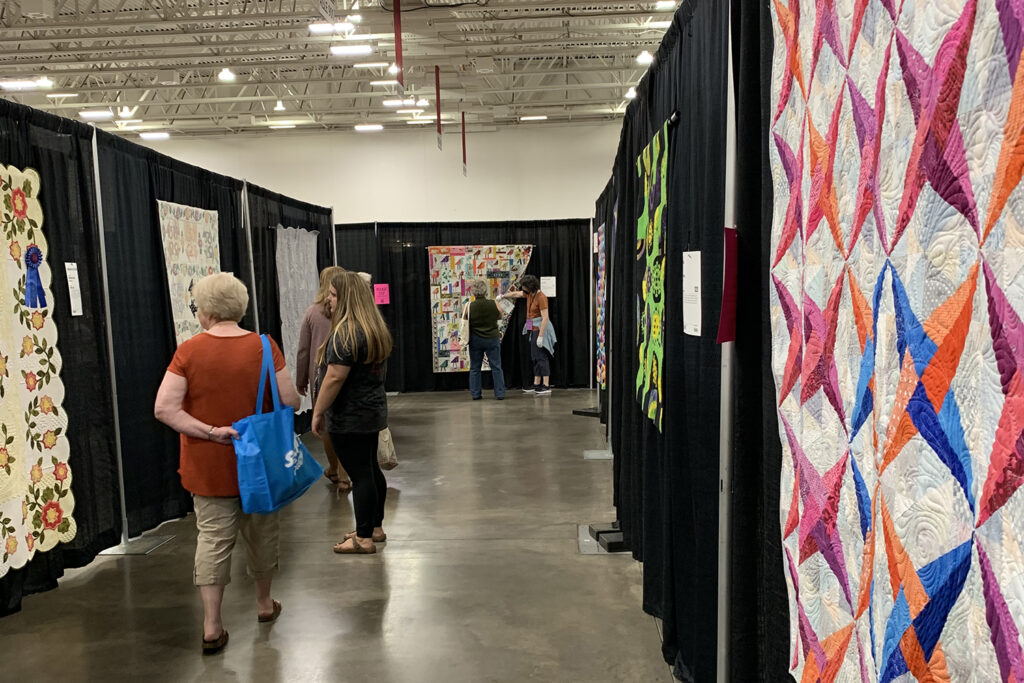
Description
The description is one of the most challenging aspects of a quilt show entry. It’s often hard to put your thoughts into an artist’s statement, and character and word limits imposed by most shows increase the challenge exponentially.
I typically start by writing an ideal description, copying it, cutting it down, and altering the wording to fit each show’s requirements. I keep each version within the document to have a starting point for descriptions of various lengths.
Next Verse Different Than the First
Descriptions:
How do scraps from one project take on a new life? Emergence, the predecessor of this quilt, was created from start to finish in the 100 days leading up to QuiltCon Together. A pile of fabric strips was left next to my sewing machine when the virtual event kicked off. As I watched lectures, I used those scraps with additional solids, prints, and hand-dyed fabrics from my stash to create the quilt top for Next Verse, Different Than the First.
250 Characters
After creating an improv quilt from start to finish in 100 days, I had a pile of fabric strips next to my sewing machine. These scraps joined other fabrics from my stash to create the quilt top for Next Verse, Different Than the First.
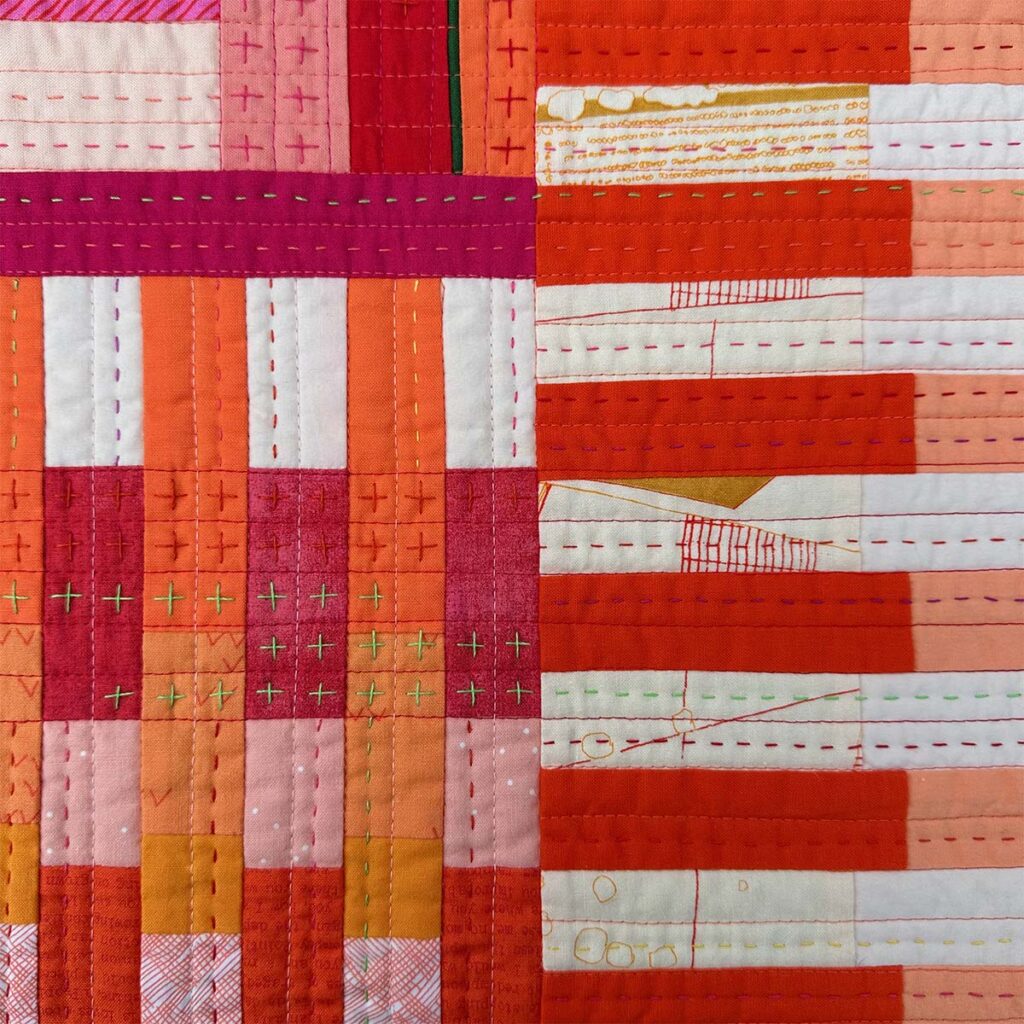
Specific Questions
Occasionally, shows have specific questions they want each entrant to answer. Sometimes, it’s general: How did you learn to sew? Other times, it’s particular to the quilt. I keep the answers to general questions in a separate document containing my personal bios (that is another helpful document), but specific questions go into the quilt file. For instance, AQS now asks about the completion time for a quilt and for any fun facts about the quilt.
Next Verse Different Than the First
- Completion Time: Four days to piece in 2021. Two weeks to quilt in 2023.
- Fun Fact: Most of the more than 40 fabrics in this quilt were from the scraps of a previous quilt
Tracking the Quilt
When you start to have multiple quilts going to various shows each year, it’s easy to forget which quilts have been in each place. I now have a section of each form where I list the shows I have entered and whether the quilt received any prizes. Some show entries may even require this information about past shows when you enter.
Next Verse Different Than the First
Awards:
Honorable Mention AQS Grand Rapids 2024
Shows Entered:
- QuiltCon 2024
- AQS Grand Rapids 2024
- AQS Lancaster 2024
- AQS Daytona Beach 2025
Working Text
I keep all of the text I produced while naming and writing descriptions for a quilt at the end of each document. It’s usually not pretty, but occasionally, it’s helpful to go back to my original thoughts.
Next Verse Different Than the First
Potential Names:
- Reprise
- Repeat
- Reiterate
- Rework
- Iterate
- Restate
- Emergent Reprise
- Countdown Reprise
- Reprise 100
- 100 Day Reprise
- Revise and Repeat
- Revise Rework Repeat
- Material Revision
- Quilting on (Fabric) Repeat
- Continuous Fabric Loop
- Next Verse, Different than the First
- Yes, And
- Rising from the Scraps
Description Drafts
In the lead-up to the virtual QuiltCon Together event, I created the quilt Emergence from start to finish in 100 Days. When QuiltCon Together kicked off, I had a pile of orange, yellow, and pink strips of fabric left next to my sewing machine. As I watched lectures, I created the quilt top for Next Verse, Different Than the First. Most of the more than 40 fabrics come from Emergence scraps, but additional prints, solids, and hand-dyed fabrics were incorporated into the final design.
Emergence, the predecessor of this quilt, was created from start to finish in the 100 days leading up to QuiltCon Together. When the virtual event kicked off, a pile of orange, yellow, and pink strips of fabric was left next to my sewing machine. As I watched lectures, I used those scraps with additional solids, prints, and hand-dyed fabrics from my stash to create the quilt top for Next Verse, Different Than the First.
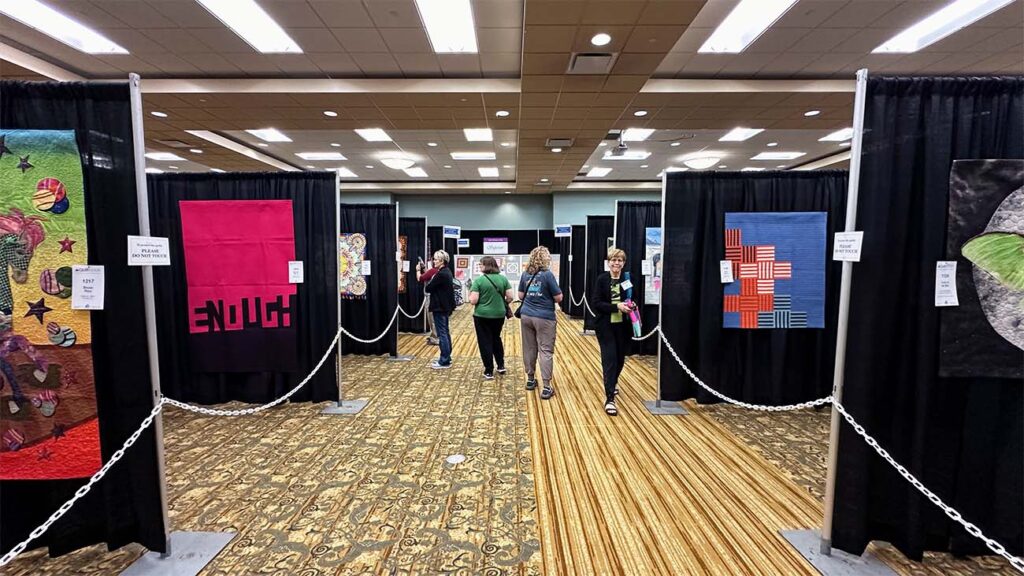
Entering a Show
With QuiltCon entries due at the end of October and other show entry deadlines fast approaching, now is a great time to consider your show entry process. If you enjoyed this post, I encourage you to check out Kelly Spell’s blog on how she tracks her quilt show entries to ensure timelines don’t overlap and that she has all of the information she needs when entering a quilt.


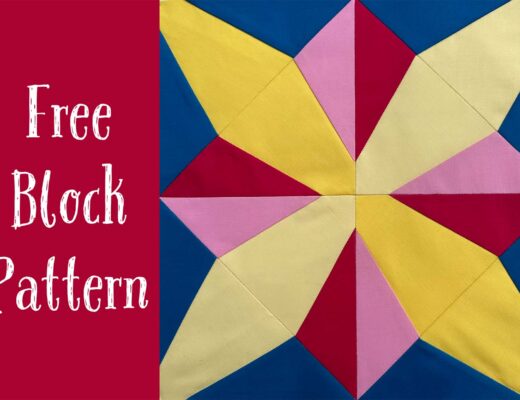
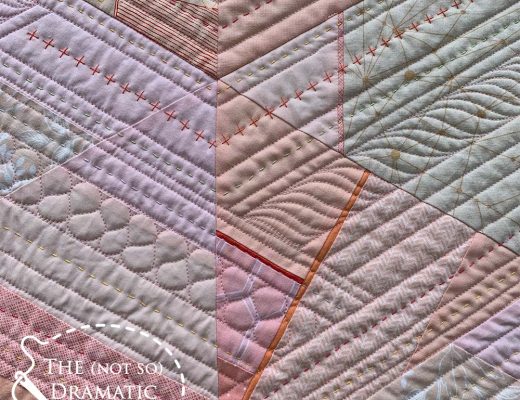


No Comments